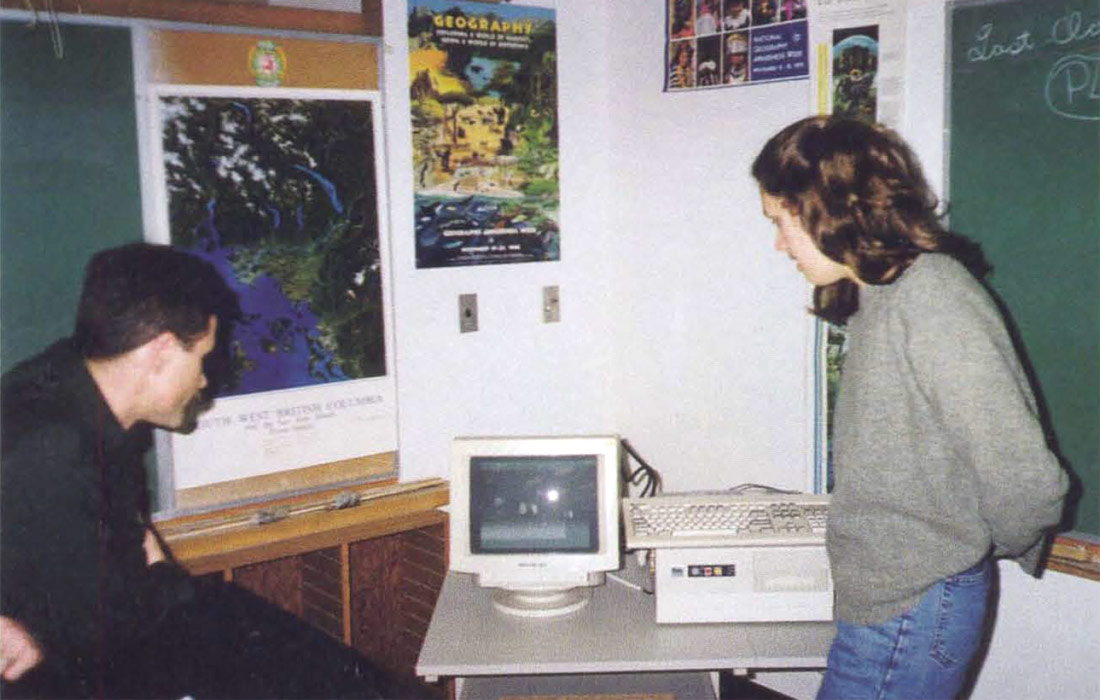Last year, when the CSEG Superfund awarded $8,000 to an earthquake awareness outreach project proposed by Dr. David Eaton, an earth sciences assistant professor from the University of Western Ontario - the timing could not have been more perfect. On September 25, 1998, a moderate earthquake of 5.2 on the Richter scale, epicentre in Pynatuning, Pennsylvania (south of Lake Erie) was widely felt in southern Ontario – from Windsor to Toronto to Owen Sound. This earthquake and its aftershocks caused some damage close to the epicentre, while Ontario residents were relatively unharmed. The earthquake made the news in Ontario and Eaton found no problem in finding five high schools interested in participating in this outreach project, dubbed SHAKE, acronym for Students Having Awareness and Knowledge of Earthquakes. The project provided five southwestern Ontario high schools with the necessary tools to introduce "hands-on" studies of earthquakes into their science program; while raising the students' and public's awareness of seismology which is an active area of research at the University of Western Ontario.
SHAKE is viewed as a pilot project, becoming a template for other universities to do the same, says Eaton. "I think it's good that high schools get the equipment to introduce geophysics into the curriculum. It's difficult to do this without having equipment to spark the students' interest in geophysics...to keep healthy enrollments at university and attract the brightest students."
The five high schools in the project were selected along a 200 km strip along the 401 highway - two in London (Banting and Laurier), two in Woodstock (Huron Park and College Avenue) and Chatham-Kent Secondary School. This past November, each school was provided with a seismometer, a 486 personal computer and a compilation of education material, containing examples of earthquakes and suggested lab exercises. The software that accompanies this system includes a "virtual drum" style of display, so that the PC monitor can serve as an effective drum plotter, providing a continuous display of recent seismic recording for public viewing. One system is also on display near the entrance to the Earth Sciences building at the University of Western Ontario. According to Eaton, visitors are often astonished at the sensitivity of this device, capable of detecting footsteps several meters away!

Wayne Suttner, a geologist turned science teacher at Chatham-Kent Secondary School has been very pleased by participating in SHAKE. "We received the seismometer after we covered earthquakes in physical geography," says Suttner. "It's been really kind of interesting. The first thing that students did when they came into the class for the first time and they saw the seismometer was they all jumped up and down. That's good because they could see that the seismometer actually works, and it got the students asking more questions."
The seismometers can be set to record over a 24hour period, and will automatically record any major events. Contained within the seismometers given to the high schools were records from the September 25th earthquake.
After Suttners students had learned how to calculate earthquake epicentres by triangulation, students were shown how the seismometer could differentiate between vibrations received from students and actual events. "They could see how the machine could differentiate between the p-wave arrival time and s-wave arrival times from the September 25 earthquake," says Suttner, who is most appreciative of the SHAKE project, in the wake of Ontario education budget cuts.
Amy Leffler, a physical geography and science teacher at Huron Park Secondary School in Woodstock, is pleased to see how proud the students are to receive the seismometer on a permanent basis. The seismometer is kept operational as much as possible, and Leffler is looking forward to recording the P-waves that will occur from the intermittent blasting from nearby limestone and gravel open pit mines.
While southwestern Ontario is not known for frequent earthquakes, Eaton says that it is normal for the region to experience about seven earthquakes annually. Since the September 25, 1998 Pennsylvania earthquake, another earthquake occurred on November 25, 1998, magnitude 3.6 with an epicentre in Lake Ontario. It was followed by another earthquake near Lake Erie, magnitude 3.0 on Christmas Day last year. "People often describe these earthquakes like a large truck driving by a building," notes Eaton. "They don't even recognize it as an earthquake."
Earthquake interest is driven by societal concerns, with earthquake damage the major issue. Places like Japan, the United States and New Zealand typically devote more efforts into earthquake research, adds Eaton. "The more we know about earthquakes, the more we can understand how the stresses build up and where they might happen...You just never know. The biggest earthquake to hit North America was in Madrid, Missouri around 1811 and it was significantly larger than the San Francisco earthquake which destroyed the whole city."
The SHAKE project has been a good experience to demonstrate how the CSEG helps fund projects that educate the students and the public, says Eaton, who co-ordinates SHAKE, along with Norma Froelich, a fourth-year undergraduate student at UWO. The next stage of SHAKE will include the development of a web site, with support from the popular "Let's Talk Science" program, containing data and information about recent earthquakes and links to other relevant sites. Data collected from these high school seismometers will complement recordings from nine permanent seismograph stations in southern Ontario, operated by UWO. Froliech, with a strong interest in science education will be using SHAKE for a central part of her BSc. honours thesis project.











Join the Conversation
Interested in starting, or contributing to a conversation about an article or issue of the RECORDER? Join our CSEG LinkedIn Group.
Share This Article